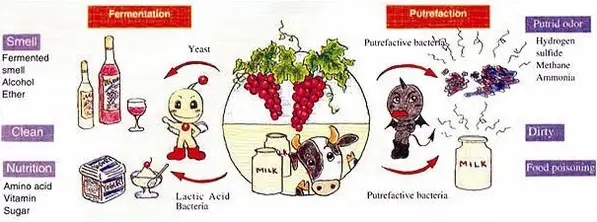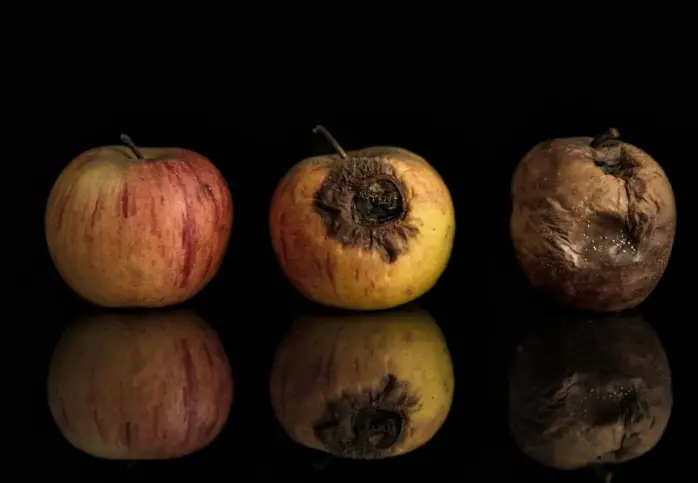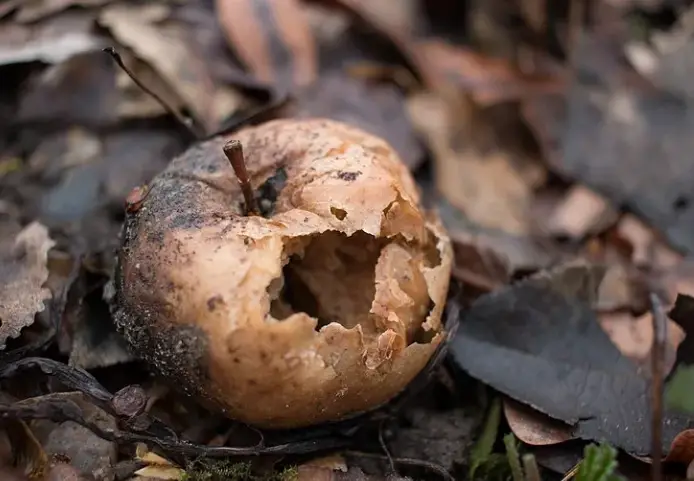The processes of decay and putrefaction play critical roles in the natural cycle of life and death, yet they are often misunderstood. Both are biological phenomena that break down organic matter, but they occur under different conditions and involve distinct biological and chemical processes. By exploring these processes, we gain insights into a fundamental aspect of ecology and biology that affects everything from soil fertility to forensic science.
Decay generally refers to the gradual breakdown of organic substances by organisms such as bacteria and fungi under aerobic (oxygen-present) conditions. Putrefaction, on the other hand, is the decomposition of the bodies of dead organisms, typically under anaerobic (oxygen-absent) conditions, leading to a reduction in the complexity of organic matter and the release of gases with a foul odor. While both processes are natural and essential for nutrient cycling, they differ markedly in their mechanisms and outcomes.
Understanding the distinction between decay and putrefaction helps in various fields, from agriculture to environmental science, as each process influences the ecosystem and the environment in unique ways. These processes contribute to the nutrient cycle by breaking down complex organic materials into simpler forms, which are then reincorporated into living organisms, thereby sustaining the circle of life.

Definitions
What is Decay?
Decay is the process by which organic substances are broken down into simpler forms of matter. Microorganisms such as bacteria and fungi play a crucial role in this process, which occurs in the presence of oxygen (aerobic conditions). This natural breakdown is vital for recycling nutrients in the ecosystem and involves the transformation of complex organic materials into simpler compounds. These compounds are then available for reuse by plants and other organisms, fostering a sustainable environment.
What is Putrefaction?
Putrefaction refers to the decomposition of the bodies of dead organisms, specifically when this process occurs under anaerobic conditions (absence of oxygen). This type of decomposition is primarily carried out by anaerobic bacteria that break down proteins, leading to the formation of gases that emit a strong, unpleasant odor. Putrefaction is often observed in environments that are sealed off from air, such as waterlogged areas or deep soil layers.
Key Processes
Decay Process
The decay process can be viewed as a series of steps that contribute to the breakdown of organic material:
- Initial Breakdown: Organic materials begin to break down under the influence of enzymes secreted by microorganisms.
- Microbial Consumption: Aerobic bacteria and fungi consume the softened organic material, accelerating decomposition.
- Nutrient Release: Essential nutrients such as nitrogen, phosphorus, and potassium are released back into the soil, enriching it and supporting plant growth.
Putrefaction Process
The putrefaction process involves distinct stages that lead to the decomposition of organic matter in anaerobic conditions:
- Protein Degradation: Anaerobic bacteria begin to degrade proteins in the dead organic material.
- Gas Formation: The degradation process results in the production of various gases, including methane, hydrogen sulfide, and ammonia, which are responsible for the characteristic foul smell.
- Mass Reduction: As the gases escape, the mass of the organic matter decreases, and what remains is a less complex form of organic material.
Causes and Factors
Causes of Decay
Several factors contribute to the onset and progression of decay:
- Presence of Oxygen: Essential for the aerobic microorganisms that drive the decay process.
- Environmental Conditions: Temperature and humidity levels significantly affect the rate of decay.
- Organic Material Type: Different types of organic matter decay at different rates due to their varying chemical compositions.
Factors Influencing Putrefaction
Putrefaction is influenced by a variety of factors that can either accelerate or slow down the process:
- Absence of Oxygen: Necessary for anaerobic bacteria to thrive.
- Environmental Conditions: Like decay, temperature and moisture levels also affect putrefaction, with warmer and wetter conditions generally accelerating the process.
- Physical Enclosure: Materials that are buried or submerged in water are more likely to undergo putrefaction due to restricted oxygen flow.
Environmental Impact
Decay and Ecosystems
The impact of decay on ecosystems is profoundly positive and includes:
- Nutrient Recycling: Decay plays a critical role in the nutrient cycle, ensuring that vital nutrients are returned to the soil.
- Soil Fertility: By breaking down organic matter, decay contributes to the richness and fertility of the soil, promoting robust plant growth.
- Biodiversity Support: The process supports various life forms, from the microorganisms involved in decay to the plants and animals that rely on enriched soil.
Putrefaction and Pollution
While generally considered less favorable, putrefaction also plays a role in ecosystems:
- Methane Emission: One of the significant environmental concerns associated with putrefaction is the emission of methane, a potent greenhouse gas.
- Water Quality: In aquatic environments, the process can lead to the depletion of oxygen, harming aquatic life and contributing to phenomena like fish kills.
- Odor Issues: The gases produced can lead to severe odor problems, affecting the quality of life for nearby human populations and wildlife.

Biological Implications
Role in Nutrient Cycling
Decay and putrefaction are fundamental to nutrient cycling, a crucial ecological process that recycles essential elements such as carbon, nitrogen, and phosphorus. These processes break down complex organic compounds in dead organic matter, converting them into simpler forms that plants can easily absorb. This cycle supports various ecosystem functions:
- Decay: Facilitates the rapid breakdown and reincorporation of nutrients back into the ecosystem, making them available for uptake by plants.
- Putrefaction: Slower than decay, this process eventually releases nutrients, though over an extended period, particularly in anaerobic environments.
Effects on Soil Health
The health of soil is significantly impacted by the continuous process of organic matter decomposition:
- Enhanced Soil Structure: Decay improves soil structure by increasing soil organic matter, which enhances soil porosity and water retention capabilities.
- Reduced Soil Fertility in Putrefaction: In areas where putrefaction dominates, especially in waterlogged conditions, soil may become less fertile due to reduced oxygen levels, which can inhibit the growth and activity of aerobic soil organisms.
Practical Applications
Uses in Forensic Science
Decay and putrefaction have vital applications in forensic science, particularly in the field of post-mortem interval (PMI) estimation. Understanding these processes allows forensic experts to determine the time since death:
- Stages of Decay: Forensic scientists use the knowledge of various decay stages to estimate PMI, observing factors like body decomposition, presence of insects, and environmental conditions.
- Putrefaction Indicators: The specific gases and compounds produced during putrefaction can also help pinpoint the time since death under anaerobic conditions.
Agricultural Relevance
In agriculture, understanding and managing decay and putrefaction processes can lead to enhanced soil productivity and health:
- Composting: Utilizing decay processes in composting organic waste helps convert it into nutrient-rich soil amendments, promoting sustainable agriculture.
- Anaerobic Digestion: Controlled putrefaction in anaerobic digesters can be used to manage farm waste, producing biogas as a byproduct, which can be used as a renewable energy source.
Differences Summarized
Comparing Key Characteristics
While both decay and putrefaction are decomposition processes, they have distinct characteristics:
- Oxygen Requirement: Decay requires oxygen, making it an aerobic process, whereas putrefaction occurs in the absence of oxygen, classifying it as anaerobic.
- Microbial Activity: Decay is primarily driven by fungi and aerobic bacteria, while putrefaction is facilitated by anaerobic bacteria that thrive in oxygen-deprived environments.
Impact and Consequences
The ecological and practical impacts of decay and putrefaction are profound:
- Ecological Balance: Both processes are essential for maintaining ecological balance by recycling nutrients, although their byproducts, like methane from putrefaction, can contribute to greenhouse gas emissions.
- Agricultural Productivity: Effective management of these processes in agricultural settings can enhance soil health and productivity, impacting crop yields and sustainability.
Frequently Asked Questions
What triggers decay?
Decay is primarily triggered by the presence of oxygen, which allows aerobic microorganisms to thrive and decompose organic material. Environmental factors like moisture and temperature also significantly influence the rate and extent of decay.
How does putrefaction occur?
Putrefaction occurs in the absence of oxygen, where anaerobic bacteria break down proteins, resulting in the release of gases that are often associated with a potent odor. This process is commonly observed in waterlogged and sealed environments.
Are decay and putrefaction reversible?
Neither decay nor putrefaction is reversible. Once these processes begin, the organic material is transformed into simpler chemical compounds that are utilized by other organisms or released into the environment.
What are the environmental benefits of these processes?
Both decay and putrefaction are essential for recycling nutrients back into the ecosystem, enriching soil, and supporting new growth. They help maintain the balance of natural elements and ensure the continuation of various biological cycles.
Conclusion
The distinction between decay and putrefaction is not merely academic but has practical implications across multiple disciplines. By understanding these processes, we enhance our ability to manage ecosystems, solve forensic cases, and optimize agricultural practices. These processes are essential for the continuation of life, providing the necessary transformation of organic matter into forms that can nourish new life.
Furthermore, the ongoing study of these biological processes highlights the intricate balance of nature and the vital role decomposition plays in ecological and biological sustainability. As we continue to explore these fundamental processes, we deepen our respect for the complex interdependencies that sustain life on our planet.

